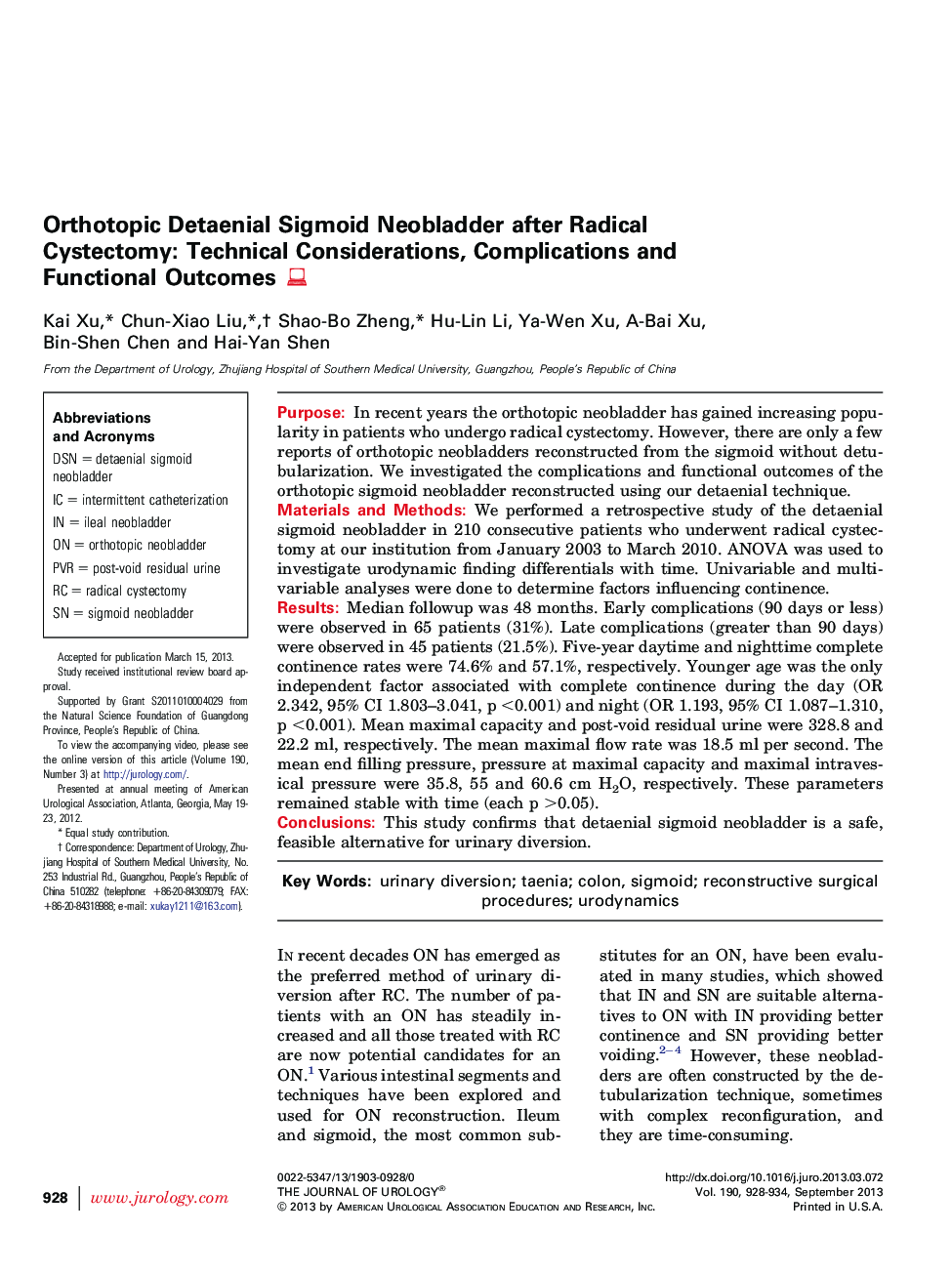| Article ID | Journal | Published Year | Pages | File Type |
|---|---|---|---|---|
| 3862508 | The Journal of Urology | 2013 | 7 Pages |
PurposeIn recent years the orthotopic neobladder has gained increasing popularity in patients who undergo radical cystectomy. However, there are only a few reports of orthotopic neobladders reconstructed from the sigmoid without detubularization. We investigated the complications and functional outcomes of the orthotopic sigmoid neobladder reconstructed using our detaenial technique.Materials and MethodsWe performed a retrospective study of the detaenial sigmoid neobladder in 210 consecutive patients who underwent radical cystectomy at our institution from January 2003 to March 2010. ANOVA was used to investigate urodynamic finding differentials with time. Univariable and multivariable analyses were done to determine factors influencing continence.ResultsMedian followup was 48 months. Early complications (90 days or less) were observed in 65 patients (31%). Late complications (greater than 90 days) were observed in 45 patients (21.5%). Five-year daytime and nighttime complete continence rates were 74.6% and 57.1%, respectively. Younger age was the only independent factor associated with complete continence during the day (OR 2.342, 95% CI 1.803–3.041, p <0.001) and night (OR 1.193, 95% CI 1.087–1.310, p <0.001). Mean maximal capacity and post-void residual urine were 328.8 and 22.2 ml, respectively. The mean maximal flow rate was 18.5 ml per second. The mean end filling pressure, pressure at maximal capacity and maximal intravesical pressure were 35.8, 55 and 60.6 cm H2O, respectively. These parameters remained stable with time (each p >0.05).ConclusionsThis study confirms that detaenial sigmoid neobladder is a safe, feasible alternative for urinary diversion.
